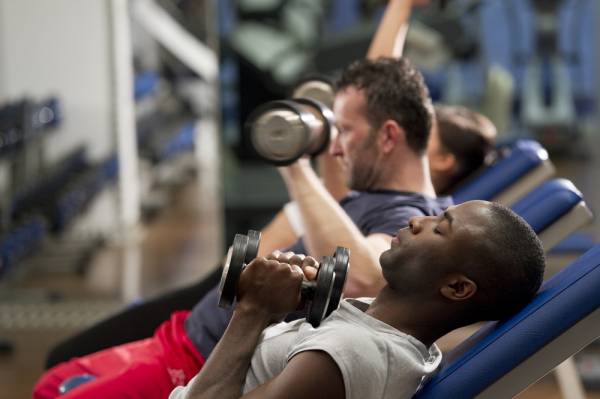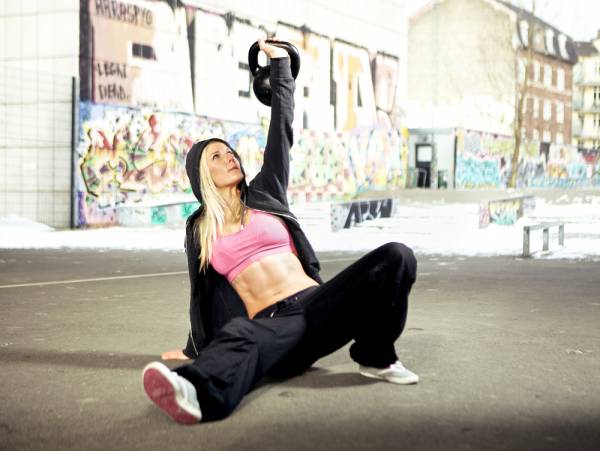Great – you read fitness blogs. It’s unfortunate, but you’re already more knowledgeable than most people in your gym. Give yourself a pat on the back, but know that simply reading the blog isn’t going to get you results. In fact, I’m comfortable assuming you’re not getting the results you want. That’s why you’ve decided to seek out fitness info on the Internet. Unfortunately none of what you read is going to help, no matter how good the info is.
3 types of people read fitness blogs:
- A very small percentage of people who read and take the time to research and absorb the information. They check references and figure out how to best use the information.
- The next group reads fitness blogs to justify what they already do. If the author doesn’t back up their personal beliefs they immediately lose interest or worse yet, publicly denounce the article.
- The last group is the most prevalent. They’re serial blog readers. Each week they’ll read a blog about the next best thing and do everything the article says. They’ll try the exercise and, if they’re a trainer, give it to every client or follow the program template. The next week a “better” article will come out and process repeats itself.
Blogs are one of the best sources to learn new exercises. For more advanced trainees these can be a great way to change up our routines. Problem is a new exercise isn’t learnt overnight.
This is where I come in.
I’m going to give you five steps to hack the gym. Follow these and you’ll learn any new movement quicker than ever before. If you’re a trainer use these methods on your clients. You’ll be blown away with how fast they throw down a perfect squat.
Step 1: Know What It Should Look Like
Without a vivid picture or video it’s impossible to learn. If you have a smart phone then downloads videos of the exercise onto it. Watch the video between sets. Close your eyes after watching the video and imagine yourself performing the movement. The better you’re able to pain a picture in your head the better you’ll perform.
I remember back in University I would rip pages out of Arnold’s Encyclopedia of Modern Bodybuilding and look at them in between sets. At the time I didn’t know it but I was definitely accelerating my learning.
Step 2: Drop the Weight
 Grooving movement patterns must be done with perfect form. Skills are learnt how they’re performed. This means if you perform something improperly you learn a bad habit. Keep practicing it wrong and the bad habit strengthens. Bad habits can’t be de-trained. Instead you have to learn good habits to offset the bad ones.
Grooving movement patterns must be done with perfect form. Skills are learnt how they’re performed. This means if you perform something improperly you learn a bad habit. Keep practicing it wrong and the bad habit strengthens. Bad habits can’t be de-trained. Instead you have to learn good habits to offset the bad ones.
Drop the weight down. If you’re more worried what the other boys and girls in the gym will think of you stop reading this right now.
Step 3: Keep the Reps Low
I’ve found form inevitably breaks after 4-6 reps or 7-10 seconds. Not a lot, but enough that the exercise isn’t perfect anymore. The best example I can think of is watching a client perform the seated row who suffers from tight upper traps. The first 4-5 reps they retract their shoulder blades well with some cueing. After that the shoulders start to creep up.
I’ll admit I don’t have anything to back my theory up other than years of practice teaching clients. I postulate that this follows the creatine phosphate energy system. The minute the body starts using carbohydrates (after ~10 seconds) as a primary energy source form diminishes. My other guess is it’s a pure focus thing. After a couple reps attention seems to inevitably wander off for most.
If you agree with my earlier point that learning a new exercise must be done with perfect form then you’ll also agree that reps should be kept low. Once you’re better trained you can start pushing yourself to failure as the form will be imprinted into your nervous system.
Step 4: Break It Down to Basics
How many movements are there really? The pec major flexes, adducts, and medial-rotates. The biceps flexes at the elbow. The quads extend the knee and flex the hip. I’ll save you the rest of the list.
It’s all the same!
I don’t care if you’re doing the exercise on a ball, on one leg, with a kettlebell or suspended in the air. It’s the same movement. Whenever you read about a new exercise take a minute and break it down. You’re probably already an expert.
Step 5: Try, Fail, Fail Better
 When you screw up (and you will) immediately stop and reassess. Don’t finish the set. Say you lose your balance trying out a single leg RDL (Romanian deadlift) – don’t put your hand down and finish the rep pretending nothing happened. Instead grip the floor with your toes, concentrate, and regain your balance.
When you screw up (and you will) immediately stop and reassess. Don’t finish the set. Say you lose your balance trying out a single leg RDL (Romanian deadlift) – don’t put your hand down and finish the rep pretending nothing happened. Instead grip the floor with your toes, concentrate, and regain your balance.
The same goes for any movement. Stop at the part where you screwed up and practice that specific aspect of the movement with purpose. Close your eyes and visualize what it should look like. Stop the exercise if need be and look back at your video or picture. Fix the broken link first and plug it back in later.
I realize not many people are going to follow my advice here. You’ll stand out in the gym and people might stare. If however you do follow my advice the same people staring will still be in bad shape when you’re ripped and ready for the summer.






